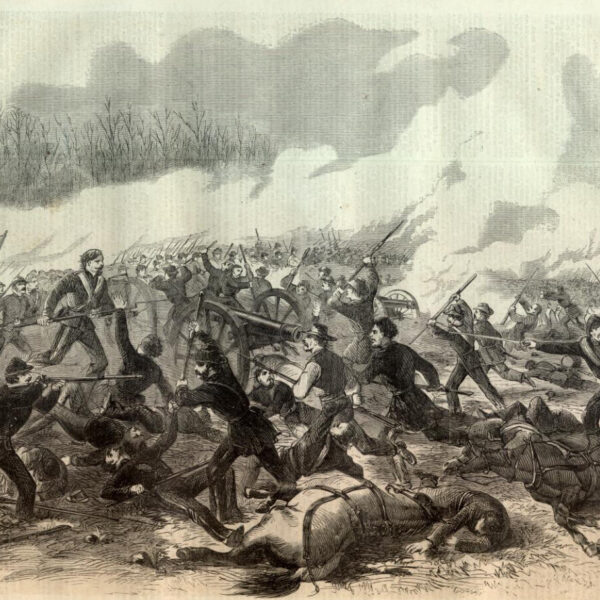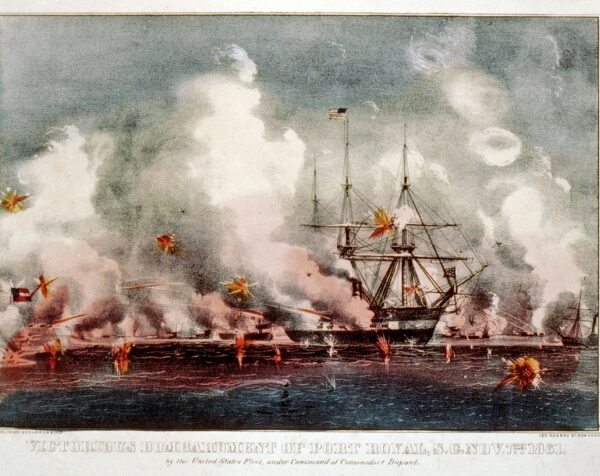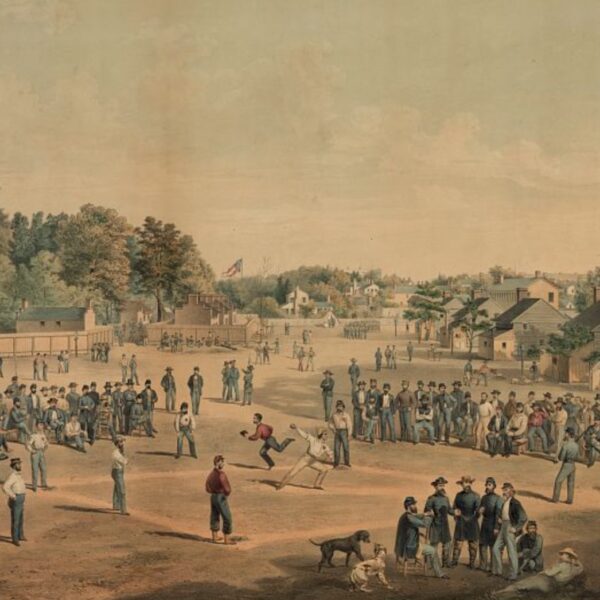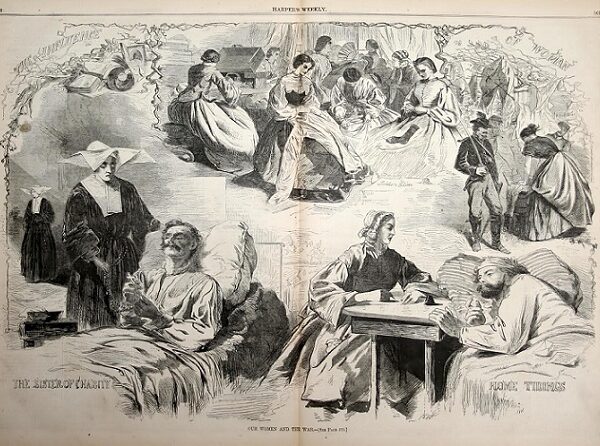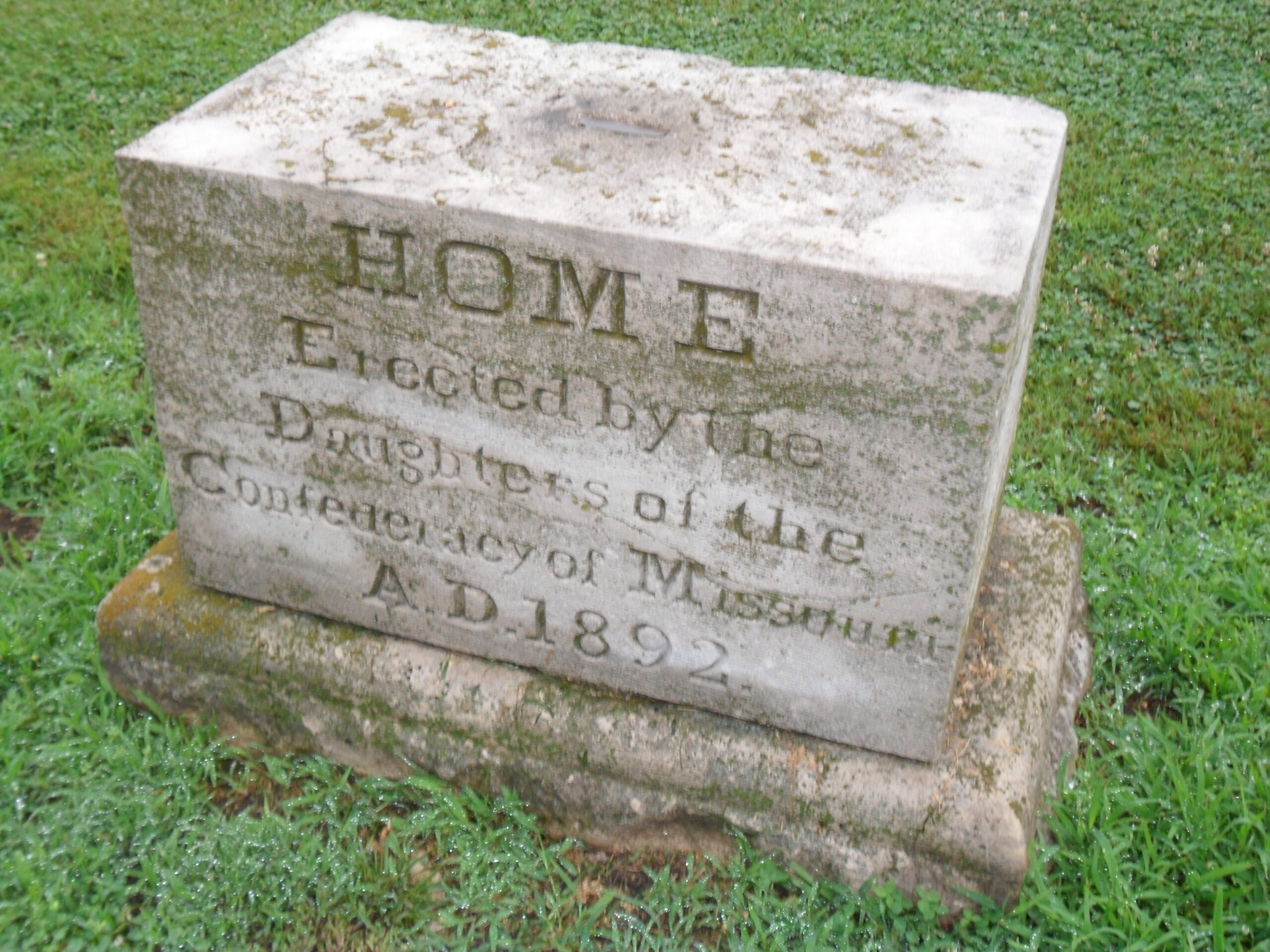
In the decades immediately following the Civil War, Missourians expressed concern for the plight of their aging and ill Confederate veterans. In response, the Ex-Confederate Association of Missouri formed in order to build and maintain a Missouri Home for Confederate Veterans. They hoped to provide housing, food, and health care for Missouri’s Confederate veterans—a daunting prospect, especially considering they proposed to undertake the expense without the help of the state government. They felt that private funding would demonstrate popular “gratitude…and true sympathy” for the veterans without making “them a charge upon the public and a burden to the community.”1
Despite such idealistic rhetoric, the Ex-Confederates struggled to raise the funds necessary to begin work on the Home. In 1890, however, a group of women in St. Louis organized to adopt the project. They christened themselves the Daughters of the Confederacy and quickly launched an aggressive fundraising campaign on behalf of the Home. By hosting dances, picnics, and socials, they eventually raised $25,000—enough to purchase a site and begin construction.2
Thanks to the Daughters’ efforts, the Home formally opened on June 9, 1893. Nestled on prime Missouri farmland, the Home grew into a campus of thirty buildings, including dormitories, a chapel, and at least fourteen private cottages. There was also a cemetery and manicured park land. For the most part, however, the grounds remained open farmland, where the veterans raised crops and livestock. Not only did the residents produce their own food, but they also generated their own electricity and steam heat. In effect, the Home was an entirely self-sufficient community. Superintendent Capt. F. P. Bronaugh pronounced it “the grandest charity in the country.”3
In part, Missourians attributed the success of the Home to the cooperation of Union veterans. A local paper reported that “past differences of opinion are having no influence in the matter, but the old Union veteran and his friends are coming with open hands and cheerful liberality to help those who started the enterprise.” In fact, the very land the Home sat on belonged to a Union sympathizer, who not only sold his 365 acre farm to the Home, but also contributed $5,000 towards its construction.4
Despite the acknowledged contributions of Union sympathizers to the construction of the Home, every aspect of its design paid homage to the Confederacy. The architecture of the main building, for instance, deliberately evoked a Southern aesthetic. Inside, residents clad in gray uniforms provided by the Daughters occupied rooms named in honor of Missouri’s Confederate heroes, including General John Sappington Marmaduke and ex-Governor Claiborne Fox Jackson. The Daughters also erected an impressive monument on the grounds in honor of Missouri’s Confederate dead.5
Of course, the Home’s most tangible reminders of the Confederacy were the veterans themselves. They were, as one historian put it, the “living monuments” of the Confederacy. Any Missouri resident who could demonstrate “honorable service” in any branch of the Confederate military was eligible for admission into the Home. These were standard requirements, in place in many of the Confederate veterans’ homes, but the Missouri Home was unique in that it not only welcomed the wives, widows, and children of Confederate veterans, but veterans of Missouri’s guerrilla bands as well. No other Confederate home in the country was so inclusive, a fact that speaks to the nature of Missouri’s guerrilla war.6
As a result, it was a diverse group of people who resided at the Home and even their shared sympathies and experiences did not always breed harmony. In his monthly report, one superintendent admitted that the residents constantly argued with one another. “You cannot force them to respect each other,” he wrote, “and it is out of the question to attempt to try it.” Some disputes were typical of individuals living in close quarters, like when one man struck his roommate over the head with his cane because he left his light on too late at night. A more serious incident occurred, however, when two residents disagreed over the election of officers at the State Reunion of Confederate Veterans and one of them attacked the other with a knife. Upon recovery, both men faced expulsion. The rules strictly prohibited fighting and the possession of weapons.7
Such dramatic events, however, were outside the norm. For the most part, life at the Confederate Home went on much the same from year to year, but as had been the case from the very beginning, it suffered persistent financial problems. As early as 1897, circumstances forced the State of Missouri to assume control of the Home. Throughout the 1930s, the numbers of residents at the home dwindled, leading to budget and staff cuts. Eventually, the Home converted some of its space for use as a hospital for disabled children. In 1950, the last veteran, “Uncle” Johnny Graves, died at 108. The State then transferred the surviving widows to nearby nursing homes and converted the Home into a state park.8
While residents remained at the Missouri Home for Confederate Veterans, its purpose as a shrine to Confederate memory was clear. Today, it seems to represent an uncomfortable reminder for some Missourians of their state’s Southern sympathies. Now known as Confederate Memorial State Park, the Home serves as the focus of debates over the appropriate use of Confederate symbols in Missouri. In 2003, the park garnered national attention in a controversy that forced the removal of a Confederate flag that flew on the grounds. Since then, the park publicizes its fishing and hiking as much as its Civil War history. Sadly, due to budget cuts, the park is no longer even staffed full-time. Nevertheless, it remains an important reminder of Missouri’s attempts to facilitate recovery from its divisive and brutal Civil War.
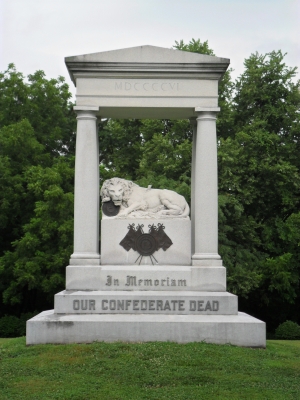
Amy Fluker is a PhD candidate at the University of Mississippi, specializing in Civil War memory. She is currently researching her dissertation, tentatively titled “‘Missouri, Bright Land of the West’: Civil War Memory and Western Identity in Missouri.”
1 Boonville Weekly Advertiser, January 2, 1891,4-3; Boonville Weekly Advertiser, January 5, 1894, 7-2; for more on Confederate veterans’ homes see R. R. Rosenburg, Living Monuments: Confederate Soldiers’ Homes in the New South (Chapel Hill: University of North Carolina Press, 1993).
2 Karen L. Cox, Dixie’s Daughters: The United Daughters of the Confederacy and the Preservation of Confederate Culture (Gainesville: University Press of Florida, 2003), 15-6; Mary B. Poppenheim, Maude Blake Merchant, Mary M. Faris McKinney, Rassie Hoskins White, Eloise Welch Wright, Anne Bachman Hyde, Susie Stuart Campbell, Charlotte Osborne Woodbury, and Ruth Jenning Lawton, The History of the United Daughters of the Confederacy (Richmond: Garrett and Massie, Inc., 1938), 2.
3 “History of the Confederate Home of Higginsville, Missouri,” Missouri. Confederate Home, Higginsville, History and Cemetery Records, The State Historical Society of Missouri (#3498), f. 1, p.1-2; “General Information at Confederate Memorial State Historic Site,” Missouri State Parks, Department of Natural Resources, accessed March 20, 2013, http://mostateparks.com/page/54952/general-information; Boonville Weekly Advertiser, July 13, 1894, 3-1.
4 Boonville Weekly Advertiser, July 10, 1891,1; “History of the Confederate Home of Higginsville, Missouri,” f.1, p.1.
5 “History of the Confederate Home of Higginsville, Missouri,” f.1, p.3.
6 Boonville Weekly Advertiser, April 3, 1891, 3-1.
7 “Reports and Minutes,” May 2, 1932, Missouri. Confederate Home, Higginsville, Records, 1897-1944, The State Historical Society of Missouri (C66), f. 54, p. 5; “Reports and Minutes,” April 1, 1932, f. 54, p.1; “Reports and Minutes,” November 1, 1932, f. 55, p. 2; “Reports and Minutes,” May 2, 1933, f. 56, p. 2; “Reports and Minutes,” January 2, 1932, f. 53, p. 6-7.
8 “History of the Confederate Home of Higginsville, Missouri,” f.1, p.2-3; “Reports and Minutes,” September 28, 1940, f. 70, p.1-2; The Columbia Missourian, May 9, 1950, 1-4.
Photos courtesy of the author.

